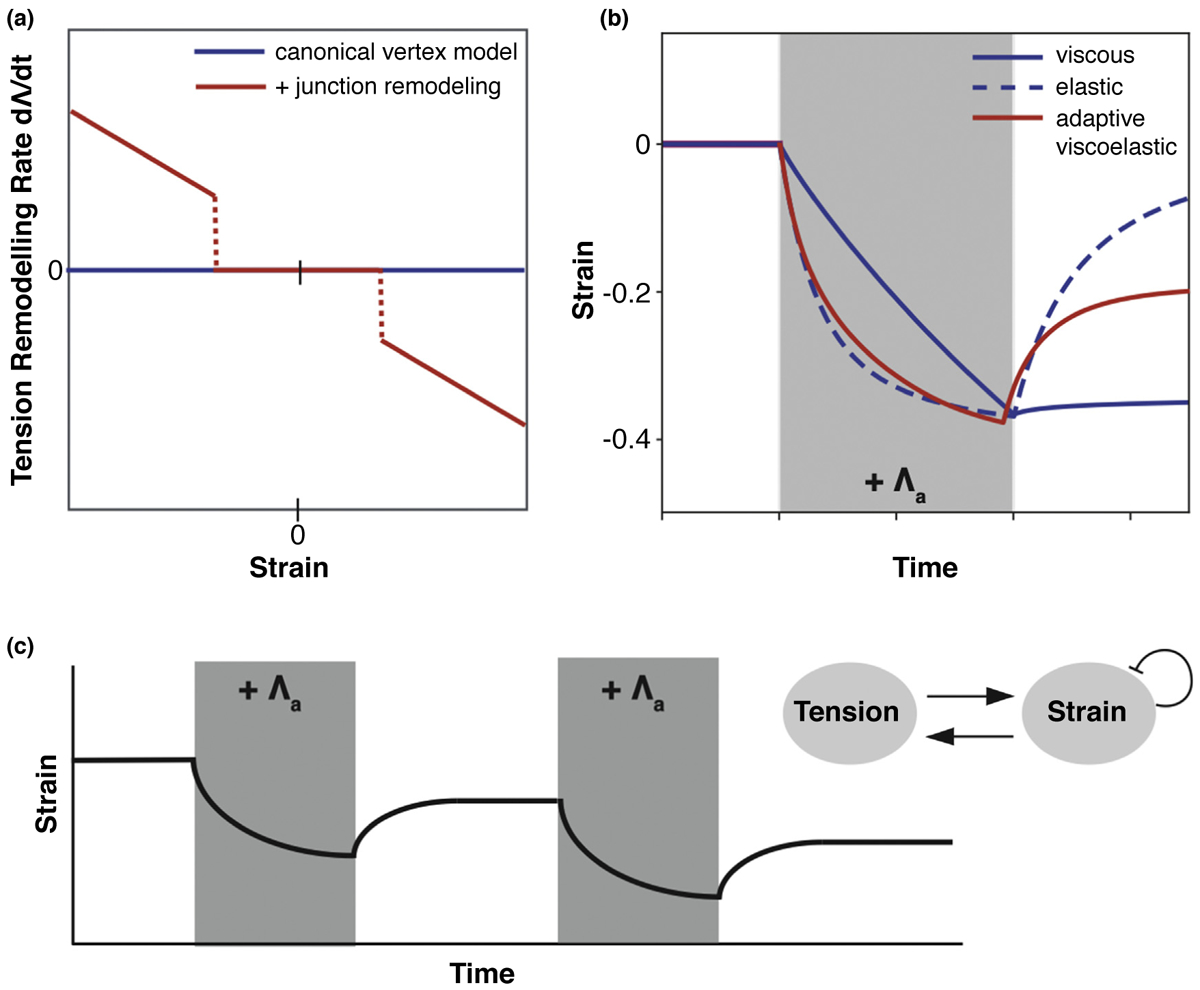Figure 3.

Active tension remodeling enables adaptive viscoelasticity in the vertex model. (a) Tension remodeling rate against junctional strain. In the canonical vertex model, tension remains constant. With junction remodeling, tension changes above a critical value of junction strain. (b) Junction strain over time in response to an applied tension, Λa (grey box). The canonical vertex model displays either viscous or elastic responses, if the tissue is in the fluid or solid phases respectively. With tension remodeling, the applied stress induces a strain on the junction which triggers tension remodeling. After stress removal, the junction tension remains increased and the junction is permanently shortened. (c) (Inset) Schematic of tension-strain feedback loop. Strain triggers remodeling of junctional tension. Tension induces strain on the junction, which is continuously relaxed, limiting the amount of remodeling under long contractions. (Main) Repeated contractions can further remodel the junction, past the single contraction limit.
